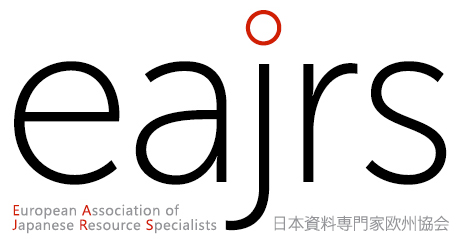![]() Koyama Noboru
Koyama Noboru
Cambridge University Library
Retired
The fate of the Japanese embassy library, Berlin immediately after World War II
After Germany had been defeated in May 1945, Japanese documents and books in Germany were seized by the Allied Powers such as the United States and Britain initially for military intelligence and military tribunals, then for other purposes. Some of them were brought to the United Sates and were microfilmed in Alexandria near Washington D.C. The largest collection of those confiscated Japanese materials in Germany is sometimes described as the Library of Japanese Embassy, Berlin which had contained the Embassy’s books and documents, but also books and private materials of the Japanese nationals who were living in Germany, mainly in Berlin, during the War.
Cambridge University academics, who had been involved in the development of the modern Japanese library collection at the University, were told by a Chinese newspaper correspondent that the Japanese Embassy Library was located in the British Sector of Berlin and that it was intact. As a result of this information, they started to secure it for Cambridge through the auspices of Britain’s Foreign Office. In the end, Cambridge could not succeed and its effort was in vain.
The Japanese Embassy Library, which had consisted of about 25,000 volumes or items, was transferred to Bad Oeynhausen where the headquarters of BAOR (the British Army of the Rhine) and CCG/BE (the Control Commission for Germany-British Element) were established at the end of August 1945. The move of the Japanese Embassy Library from Berlin to Bad Oeynhausen was approved by the US-British Control Council/Control Commission Documents Centre in Frankfurt which was the successor of SHAEF (the Supreme Headquarters Allied Expeditionary Forces) Documents Centre.
Among 25,000 volumes or items, 5,000 were eventually donated to the University of London with the help of Lt. Col. A. J. Marsden of the Joint Intelligence committee/German Section, approximately 2,500 each to SOAS (the School of Oriental and African Studies) and SSEES (the School of Slavonic and East European Studies). SOAS received Japanese language books and SSEES Slavonic language books (mainly in Russian and Polish). However, the rest of them were absorbed into the “Intelligence Library” in Bad Oeynhausen, later in Herford, which had been called GSL (the General Staff Intelligence) Library. Those remaining 20,000 volumes or items were probably dispersed into various places, including local libraries in Germany. My paper aims to give a short history about the Japanese Embassy Library in Berlin after the War.
第二次世界大戦直後のベルリン日本大使館図書館の命運
1945年5月にドイツが敗北した後、ドイツにあった日本語の文書や書籍は、まず軍事情報および軍事裁判のために、次には他の目的のために、米国や英国などの連合国によって接収された。接収されたもののいくつかは米国に運ばれ、ワシントンDC近郊のアレクサンドリアでマイクロフィルムに撮影された。ドイツで没収された資料の中で一番大きなコレクションは、ベルリン日本大使館図書館と呼ばれるもので、その中には日本大使館所蔵の文書や書籍だけではなく、戦時中ドイツ、大部分はベルリンに住んでいた日本人が所蔵していた個人の資料や書籍なども含まれていた。
ケンブリッジ大学の関係者はケンブリッジ大学図書館のために戦時中からすでに近代の日本語コレクションを発達させたいと考えていたが、たまたまベルリンを訪問した中国の有名な新聞の特派員(蕭乾)によって、ベルリン日本大使館の図書館が手つかずの状態にあることを知らされた。日本大使館は四分割されたベルリンの英国管轄地区にあったのである。そこで、ケンブリッジ大学側は英国外務省などを通じてベルリン日本大使館図書館の資料を確保しようとするのであるが、結局うまくゆかずその努力は無駄に終わった。
ベルリン日本大使館図書館には約2万5千冊(点)の資料が含まれていたが、それは1945年8月の終わりにベルリンからバート・エーンハウゼンというところに移動された。バート・エーンハウゼンには、英国陸軍ライン軍団やドイツ統治委員会英国の部の本部が置かれていた。また。そのベルリン日本大使館図書館の移動は、フランクフルトにあった米英統治協議会・統治委員会ドキュメント・センターの指示によるものであった。そのドキュメント・センターは連合国遠征軍最高司令部ドキュメント・センターの後継機関であった。そのドキュメント・センター、少なくとも英国の部分は同じ時期にバート・エーンハウゼンに移動していたのである。
ベルリン日本大使館図書館にあった約2万5千冊(点)の資料のうち、約5千冊(点)はA・J・マースデン中佐によってロンドン大学に寄贈されることになった。それずれ2千500冊がロンドン大学の東洋アフリカ学院(SOAS)とスラブ・東欧学院(SSEES)に寄贈された。SOASは日本語の書籍、SSEESはスラブ語(ロシア語やポーランド語など)の書籍を受け取った。また、その寄贈を指示したマースデン中佐は英国の合同情報委員会ドイツ課に所属していた。残りの約2万冊(点)はバート・エーンハウゼン、後にはヘルフォルトにあった英国のいわゆる”情報図書館”に吸収された。その”情報図書館”は以前には参謀情報図書館と呼ばれていた。もしかすると、実体としてはドイツ統治委員会英国の部のドキュメント・センターと同じものであったかもしれない。その約2万冊(点)の資料はその後ドイツの地元の図書館を含めていろいろなところに分散し、散失していったようである。どのように散失したのかは不明である。今回の発表で、以上のような、第二次世界大戦直後におけるベルリン日本大使館図書館の短い歴史を取り上げる予定である。
